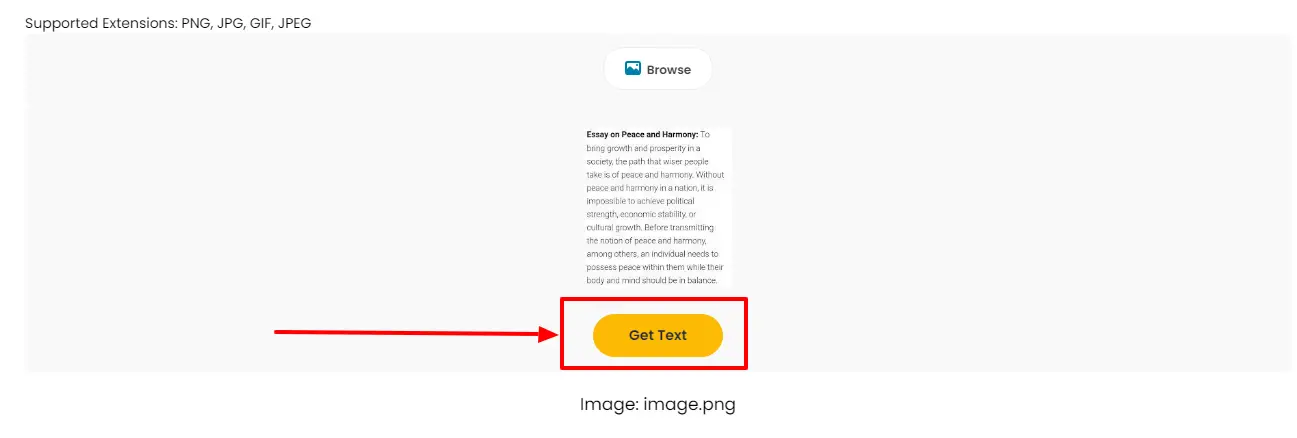Are you tired of entering physical text on the computer to digitize it? I know it can be a pretty tedious job and one can easily get bored from retyping the text.
Do you know you can extract text from images with just one click? Yes!! That’s true. The development of AI technology has made this seemingly impossible thing possible.
Image-to-text converters are pretty nifty AI tools that can extract text from an image in just a few seconds. In this guide, we will introduce what image-to-text converters are, how to use them in five simple steps, and their benefits.
What is an image-to-text Extractor?
The image to text converter is an AI tool with special OCR models that permit it to extract text from images or images. OCR models stand for Optical Character Recognition model, the tool generated using this model can recognize text in an image and convert it into digital text for easy storage and editing. This is a handy tool that simplifies the dull and difficult retyping or data entry job for humans.
How to Extract Text from Images?
The text can be extracted from images easily using an image-to-text converter. Here are 5 simple steps that you can employ for text extraction from images:
1. Take Pictures:
The first step is to take the pictures of the text that you want to digitalize. You can click pictures using your smartphone’s camera or scan the file to make JPEG format images. You just have to take pictures of all the documents that you want to digitalize.
2. Open the tool:
The second step is to open the image to the text converter tool. You are free to use any tool that you prefer. For instance, I’m using Imagestotext.io here because I find it really compatible, accurate, and efficient.

3. Upload picture:
The third step is to upload the image or images. The uploading options vary from tool to tool. The tool which I’m using here has three options:
i. CTRL+V = copy and paste the image or images
ii. Drag and Drop = Drag the image from the computer to the tool
iii. Browse = Upload the image by browsing it from the computer.
Another thing to note here is that some tools process one image at a time. If you want to process a batch of images, then make sure to choose the tool accordingly.

4. Initiate Processing:
The fourth step is to initiate the working of the tool by clicking the button. The tool I’m using has a “Get Text” button. Simply click the button to initiate the working of the tool.
It will take a couple of seconds to extract the text. Then the retyped text will appear in a dialogue box.

One thing I absolutely love about this tool is its swift processing. The retyping task that used to take me hours to complete is accurately typed using this tool in a few seconds.
5. Use Text:
The digital editable text can be copied and pasted to the desired document or database. With the help of an image-to-text converter, the retyping process has become easier for humans.
These five steps are pretty much the same no matter which tool you use for text extraction.
What are the Benefits of an Image-to-Text Converter?
Images-to-text converter is a beneficial tool that can be used in different contexts by different people. Let’s discuss some benefits and applications of this revolutionary tool:
1. It is beneficial for legal teams and lawyers who are required to store data of clients like agreements, contracts, case files, etc. into the system. This data is usually in the form of physical documents which are required to be typed again on the computer. The lawyers and legal teams can use this tool for easy text conversion.
2. It is beneficial for doctors and paramedical staff who are required to add patients’ data to the hospital’s database. The prescriptions, medical tests, and medical history of the client are usually in written or printed documents that can be easily entered into the database by using an image-to-text converter.
3. The professors and teachers can use this tool to make notes and slides for their lectures. The text from physical notes and books can be easily typed into the computer using image to text converter. students can also use this tool for assignments, notes, and homework.
4. It is beneficial for journalists and reporters who have written documents, interviews, and notes. They have to retype these notes, interviews, and documents before using them in their news report or article. This tool will help extract text from the image or images.
5. It is beneficial for the HR team and recruiters whose tables are piled up with resumes, forms, employee agreements, and contracts. They need to record all the information in the offices’ databases, and an image-to-text converter can provide assistance.
6. The marketing agencies collect data through surveys, interviews feedback, etc. This data is usually in printed format. They can use an image-to-text converter to extract text from the images. The digital data can then be used to devise marketing strategies.
7. It is also beneficial for publishers who hire special employees to retype books and novels to make the e-book versions. The e-book versions of books are widely used and bought through websites like Amazon, Chegg, etc.
8. It can be used by researchers and scientists who analyze information from charts, graphs, research articles, and papers. They can easily convert textual information from physical documents to digital text using an AI image-to-text converter.
In short, image-to-text converters have made the conversion of physical text to e-text easy and accurate. The humans take hours to retype the text while this AI tool completes the job in a matter of few seconds. The use of an image-to-text converter will help you extract text from the images with accuracy and efficacy and it will save you time. So, get an image text converter today and work smart, not hard.
